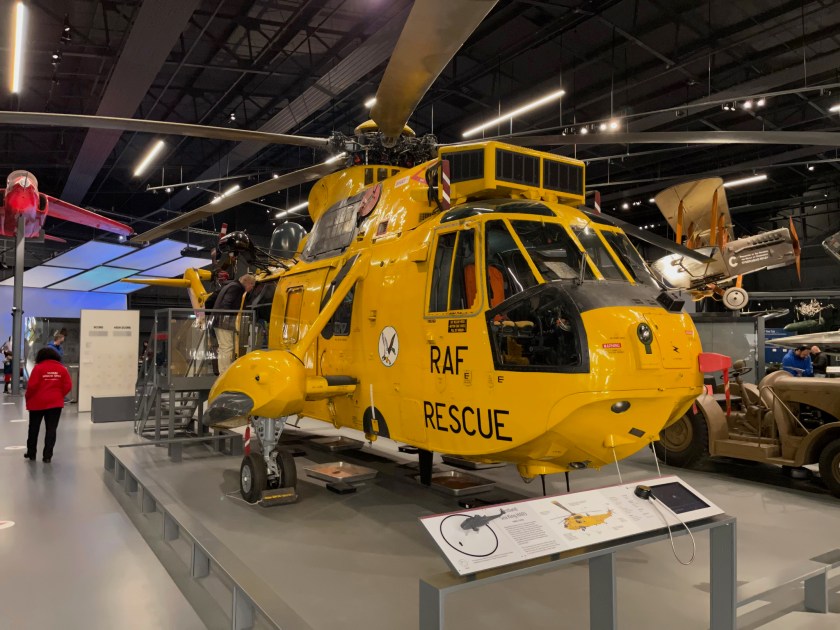This Westland Sea King HAR3 was on display at RAF London.

Originally designed for anti-submarine warfare, the Westland Sea King was adapted for long-range RAF search and rescue duties as the Sea King HAR3, serving in the UK and Falkland Islands.

The Westland WS-61 Sea King is a British licence-built version of the American Sikorsky S-61 helicopter of the same name, built by Westland Helicopters. Powered by two Rolls Royce Gnome gas turbines, deliveries began in 1978, replacing the Whirlwind HAR10 and Wessex HAR2 in providing search and rescue cover for both military and civilian personnel across the UK.
Sea Kings were fitted with highly advanced search and navigation equipment and operated in all weathers both day and night. Final RAF aircraft retired 2015, replaced by private contract civilian helicopters in the SAR role. The Royal Navy retired their Sea Kings in 2018.
There was also a Westland Sea King on display at Duxford.






